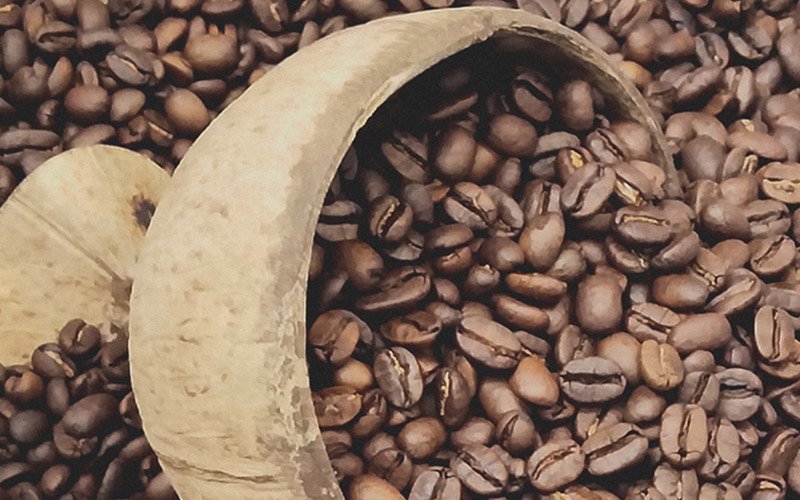1001 Things About Coffee Bean Plant You Don’t Want to Miss
People enjoy drinking coffee as one of their favourite beverages. Coffee is famous because it has a distinctive taste and aroma (Ramalakshmiet al., 2008). The coffee bean plant belongs to the Kingdom Plantae, Sub kingdom Tracheobionta, Super Division Spermatophyta, Division Magnoliophyta, Class Magnoliopsida/Dicotyledons, Subclass Asteridae, Order Rubiales, Family Rubiaceae, Genus Coffea, Species Coffea arabica L (USDA, 2002).
Coffee (Coffea spp.) is a species of tree-shaped plant and belongs to the family Rubiaceae and genus Coffea.

Coffee plant – FnB Tech Indonesia
Types of Coffee Bean Plants
1. Arabica Coffee Beans
In the 9th century, coffee became a popular drink among Arabs. Europeans began to know about coffee in the 16th century through Arab traders in the port of Mocha, Yemen. The Dutch brought the coffee arabica plant to the Netherlands in 1616 and cultivated it.
2. Robusta Coffee
Robusta comes from the word ‘robust,’ which means strong, according to the posture (body) description or the level of its strong viscosity. Because this variety is derived from the Coffea canephora species, Robusta is not a species.
Although Robusta can grow in the lowlands, it is best grown at elevations between 400 and 800 meters above sea level. The optimal temperature for robusta coffee growth ranges from 24-30oC with rainfall of 2000-3000 mm per year.
Robusta Coffee Clone Type
Robusta coffee is derived from several species, especially Canephora. For that reason, the source of plant seeds for robusta is not called a variety but a clone.
Like Arabica varieties, the Koka Research Center developed superior robusta clones in Indonesia. The following are several types of robusta clones recommended by the institution:
● BP308 clone. This coffee robusta plant clone is a superior plant resistant to nematode attacks. Another feature of this robusta clone is it is tolerant of infertile soils. The rootstock should be BP308, while the upper stem should be connected to other clones suited to the agroclimatic conditions in the region.
● BP42 clone. This clone’s productivity is 800-1200 kg/ha/year—medium stature with many branches and short internodes. The resulting fruit is large and densely packed.
● SA436 clone. It has relatively high productivity, reaching 1600-2800 kg/ha/year. The shape of the seeds of this clone is small, and the size is not uniform.
● BP234 clone. Its productivity is 800-1200 kg/ha/year. Slender build with long, flexible branches. The fruit grains are relatively small, and the size is not uniform.
3. Liberica Coffee
Liberica coffee came from Angola and entered Indonesia in 1965. Although it has been around for a long time, the number of trees remains limited due to low yields and poor fruit quality (Prastowo et al., 2010).
The Liberica coffee bean plant (Coffea liberica) can grow well in the lowlands where robusta and arabica coffee cannot grow. This coffee type is more resistant to HV disease than other types.
This may be the advantage of Liberica coffee. Liberica coffee is rated lower than Robusta and Arabica. The fruit size is uneven. Some are large; some are small, mixed in one tree. In addition, the yield of Liberica coffee is also meagre, around 12%.
Coffee Plantation in Indonesia
1. Aceh
You must be familiar with this fantastic city. Acehnese specialty coffee has gone global, and the tradition of drinking coffee is robust here. The famous coffee is Gayo coffee which comes from the Gayo area. This coffee belongs to the Arabica coffee type with a sour taste, body or light thickness, and a unique aroma profile. Not surprisingly, Gayo coffee has been named the world’s no.1 Arabica coffee.
2. Lampung
Besides Aceh, Lampung, precisely in West Lampung, is also one of the best coffee-producing areas in Indonesia. The coffee bean plant grows at 800 meters above sea level. The most popular type of coffee is robusta, with fine coffee grounds and a distinctive aroma.
Due to dry processing, coffee beans have robust characteristics. This coffee has the aroma of chocolate and spices. After drinking, you will have a nutty aftertaste, slightly sweet like caramel and slightly bitter like cocoa.
3. Bengkulu
A year before the pandemic, Bengkulu was the largest coffee producer. It has contributed 70% of export commodities. Bengkulu has a large coffee plantation, around 95 hectares, mainly Robusta coffee; the rest is Arabica.
4. Mandailing

Mandheling Coffee Beans – FnB Tech Indonesia
Still from the island of Sumatra, one of Indonesia’s best coffee-producing areas is Mandailing. Coffee plantations in Mandailing have existed since the Dutch colonial era and still exist today. In contrast to Gayo coffee, which tends to taste sour, Mandailing coffee has a distinctive sweet taste with low acidity. The aroma is also unique, such as fruity and floral scents. Coffee shops usually use Mandailing coffee for house blends.
5. Toraja
Talking about the best coffee-producing areas in Indonesia, we can’t miss Toraja. This coffee bean plant comes from the highlands of about 1400 masl in South Sulawesi and has a fruity taste. In addition, this coffee is a bitter sensation on the tip of the tongue when slurped, is not too sour, has a heavy body, and has an earthy aroma. The character of this coffee can be said to resemble spices. Even so, the aftertaste is soft and smooth.

Coffee Fruits – FnB Tech Indonesia
Coffee Harvest Season Indonesia
March is a month full of hard work when farmers start harvesting coffee cherries from their gardens. Indonesian coffee plantations pick cherries ready for harvest in the morning and afternoon. Then, they separate the cherries and coffee beans at night and wash them.
In this stage, the process for washing, naturalizing, or semi-washing the coffee cherry is also decided.
Some farmers do this washing process themselves. Some directly send their coffee cherries to the coffee factory. The disadvantage is that they will get lower wages, even though this is only the case in some regions of the world.
The harvest period begins to end in mid-April gradually. Unharvested coffee cherries will rot on the tree and attract pests, so it’s imperative to harvest them as soon as possible. These pests will affect the quality of the harvest in the following year.
In which month is coffee grown? Depending on the area, it produces coffee all year long, although the primary harvest is mainly from October to March, with a Mitaca fly crop from April to June.
FANDB Tech Coffee Plantation Pakpak Bharat
As a successful exporter, we developed a 3,412 Ha coffee plantation in Pakpak Bharat, Dairi, North Sumatra. Today, this plantation is the largest privately owned plantation in Medan.
Beyond our state-of-the-art processing facilities, we also use cutting-edge transportation and logistics systems to excel in handling and shipping coffee bean plants. We must strive to maintain great stakeholder connections as we grow our company.
As we expand our company over the whole coffee value chain, from plantation to retail and from coffee machines to coffee cafes, we now operate upstream and downstream in the sector. We are working hard to become the best source of coffee in Indonesia.
Additionally, PT. FANDB Tech Indonesia received several honours. We received 2010 Best Exported from Indonesia award that year. Our chairman received the honours of ASEAN Business Man of the Year in 2012 and Asia Pacific’s Most Outstanding Entrepreneur in 2011 consecutively. For our 23 years of expertise in advancing the coffee business in Indonesia, we were recently honoured to earn the Primaniyarta Award as a Superior Potential Exporter in 2013.











